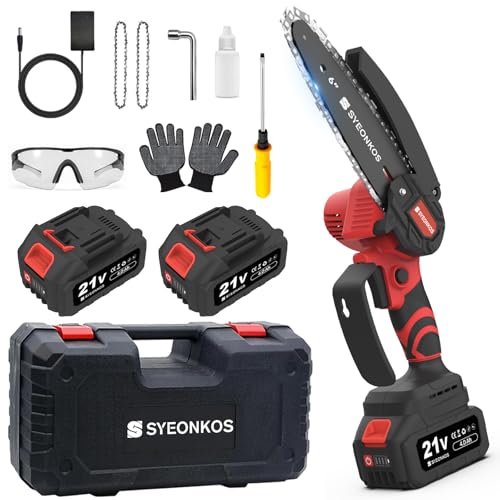Understanding Chainsaws: Basics and Types
What is a Chainsaw?
A chainsaw is a powerful tool designed for cutting through wood, making it incredibly useful for tasks like tree felling, limb trimming, and firewood preparation. Whether you need it for professional landscaping, light yard work, or simply maintaining your garden, understanding chainsaw basics is essential.
Types of Chainsaws and Their Uses
There are several types of chainsaws available on the market, and each has its own specific purpose. For instance, gas-powered chainsaws are often preferred for heavy-duty tasks, like cutting down larger trees, due to their robust power and mobility. Electric chainsaws, on the other hand, tend to be lighter and easier to handle for smaller jobs around the yard, making them perfect for home use. Battery-powered chainsaws strike a balance between the two, offering ease of use without the need for cords, yet with decent power for mid-range duties.
How to Choose the Right Chainsaw for Your Needs
Assessing Your Cutting Needs
Before purchasing a chainsaw, it’s crucial to evaluate what you will primarily use it for. Are you going to be felling large trees, or do you need something for routine garden maintenance? Knowing your intended use will help narrow down your options significantly.
Size and Weight Considerations
Another important factor is the size and weight of the chainsaw. A lightweight model may be more comfortable for prolonged use, especially if you’re planning on using the saw for extended periods. Heavier chainsaws may provide additional power, but could also lead to fatigue faster.
Chainsaw Features to Consider: Power, Portability and Safety
Power Options: Gas vs Electric vs Battery
The power source of the chainsaw affects its performance. Gas-powered models generally provide higher horsepower, which is great for tougher jobs but requires more maintenance. Electric models can offer enough power for smaller tasks and are quieter, while battery-operated chainsaws allow for easy manoeuvrability without being tied to a power source.
Portability and Ease of Use
Consider how you will transport the chainsaw and whether you’ll need to use it in tight spaces. Models that are easy to handle and carry make a significant difference, particularly for casual users.
Safety Features to Look For
Safety is paramount when choosing a chainsaw. Look for features like chain brakes, automatic oilers, and ergonomic handles. These elements help ensure safe operation and can prevent accidents.
Essential Accessories for Chainsaw Users
Protective Gear is a Must
When working with chainsaws, wearing the right protective gear is essential. Strong gloves, hard hats, eye protection, and chaps are crucial to safeguarding yourself from potential injuries while you cut.
Extra Chains and Sharpening Kits
Having an extra chain on hand is advisable, especially if you’re working on larger projects. You may also want a sharpening kit to maintain your chain’s effectiveness and prolong its lifespan. A sharp chain cuts more efficiently, making your work easier.
Maintaining Your Chainsaw for Longevity and Performance
Regular Cleaning and Inspection
To keep your chainsaw in top condition, regular cleaning is critical. After each use, clear away sawdust and debris. Inspect the chain for wear and replace it if necessary to ensure optimal performance.
Oil Changes and Tune-Ups
Proper lubrication is essential for the longevity of your chainsaw. Regularly check the oil level, and replace the bar oil as needed. It’s also a good idea to perform tune-ups periodically to keep your chainsaw running smoothly.




























